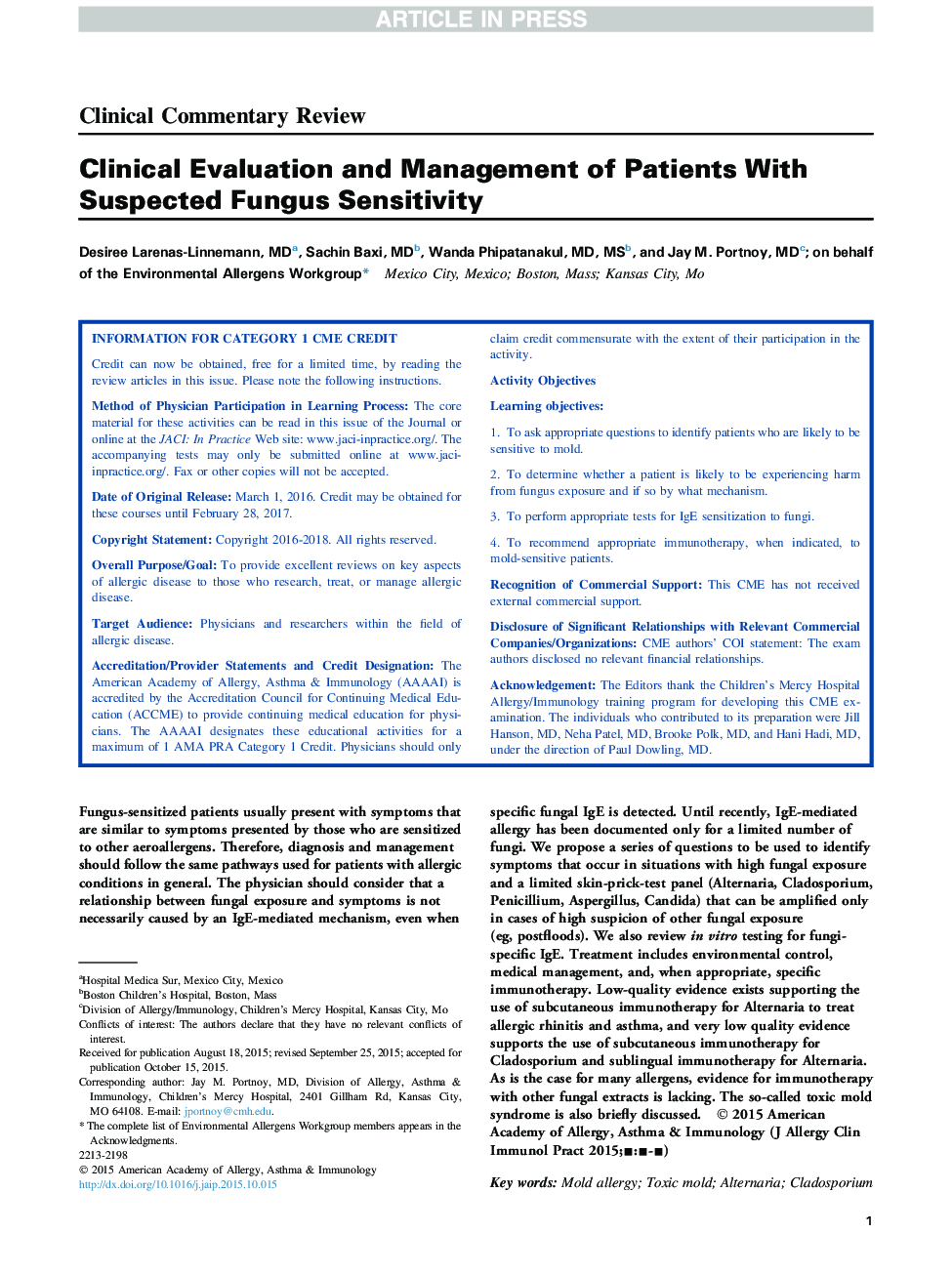| Article ID | Journal | Published Year | Pages | File Type |
|---|---|---|---|---|
| 3204140 | The Journal of Allergy and Clinical Immunology: In Practice | 2016 | 10 Pages |
Abstract
Fungus-sensitized patients usually present with symptoms that are similar to symptoms presented by those who are sensitized to other aeroallergens. Therefore, diagnosis and management should follow the same pathways used for patients with allergic conditions in general. The physician should consider that a relationship between fungal exposure and symptoms is not necessarily caused by an IgE-mediated mechanism, even when specific fungal IgE is detected. Until recently, IgE-mediated allergy has been documented only for a limited number of fungi. We propose a series of questions to be used to identify symptoms that occur in situations with high fungal exposure and a limited skin-prick-test panel (Alternaria, Cladosporium, Penicillium, Aspergillus, Candida) that can be amplified only in cases of high suspicion of other fungal exposure (eg, postfloods). We also review in vitro testing for fungi-specific IgE. Treatment includes environmental control, medical management, and, when appropriate, specific immunotherapy. Low-quality evidence exists supporting the use of subcutaneous immunotherapy for Alternaria to treat allergic rhinitis and asthma, and very low quality evidence supports the use of subcutaneous immunotherapy for Cladosporium and sublingual immunotherapy for Alternaria. As is the case for many allergens, evidence for immunotherapy with other fungal extracts is lacking. The so-called toxic mold syndrome is also briefly discussed.
Keywords
Related Topics
Life Sciences
Immunology and Microbiology
Immunology
Authors
Desiree MD, Sachin MD, Wanda MD, MS, Jay M. MD,
